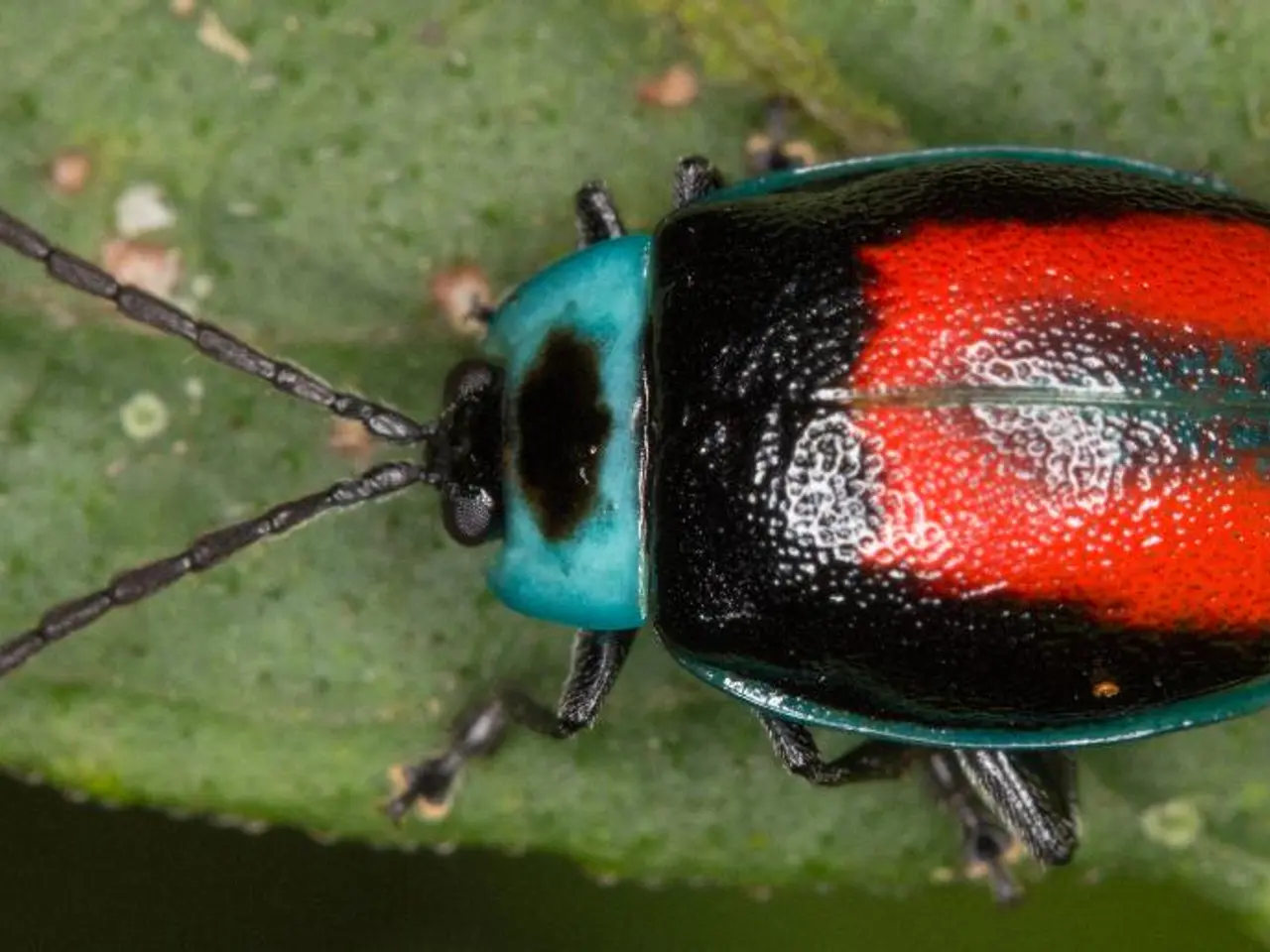Home Garden Pest Management: Managing Colorado Potato Beetles
Effective Control Methods for Colorado Potato Beetles in Home Gardens
Colorado potato beetles can pose a significant threat to potato crops in home gardens. However, with the right approach, gardeners can effectively manage this pest while minimizing synthetic chemical use.
Physical and Cultural Controls
Hand-picking adults and larvae daily from the plants and dropping them into soapy water or for natural predators like birds or chickens is an effective and chemical-free method. Focus on larger larvae first, as potatoes can tolerate minor leaf damage. Crushing eggs found on undersides of leaves reduces future populations. Floating row covers prevent beetles from laying eggs on plants, but require timely installation. Crop rotation by skipping potatoes for a year deprives beetles of food, disrupting their life cycle. Clean garden weeds such as nightshade and ground cherries that harbor beetles when potatoes are absent. Use insect netting or barriers properly installed and timed to block beetles. Plant early-maturing potato varieties to complete harvest before beetle populations peak.
Biorational Ingredients and Alternative Insecticides
The entomopathogenic fungus Beauveria bassiana (strain HF23), a biological insecticide that infects beetles by destroying their cuticle, is a selective biorational option with low risk of resistance development and minimal environmental impact. Products allowed under the National Organic Program (NOP) often include such biopesticides; consult OMRI-listed crop pest control products for approved biorational agents suitable for organic gardens.
Combined, these approaches enable gardeners to manage Colorado potato beetles effectively while promoting environmental safety and sustainability.
Summary
| Control Method | Description | Notes | |-------------------------------|---------------------------------------------|----------------------------------| | Hand-picking | Remove adults and larvae daily | Chemical-free, effective | | Egg crushing | Smash eggs on leaf undersides | Low effort, reduces next gen. | | Floating row covers | Physical barrier to prevent egg laying | Requires timely installation | | Crop rotation | Skip potatoes yearly to break beetle cycle | Long-term prevention | | Weed control | Remove weeds that harbor beetles | Limits beetle refuge | | Early-maturing varieties | Harvest before beetle damage peaks | Reduces exposure to beetles | | Insect netting/barriers | Block beetle access physically | Combine with crop rotation | | Beauveria bassiana fungus | Biological insecticide destroying beetle cuticle | Selective, low resistance risk |
This integrated pest management strategy leverages cultural, physical, and biorational methods for effective control of Colorado potato beetles in home gardens. Larvae of Colorado potato beetles often feed in groups, causing isolated severe defoliation. To delay resistance development, alternate chemical classes for insecticide use during different generations. New adults of Colorado potato beetles appear in mid-summer and repeat the life cycle. Timing is crucial for insecticide treatment; it should be done early to prevent crop loss. Biorational ingredients are only effective against very young larvae and will not kill large larvae or adults. Repeated and intensive use of insecticides against Colorado potato beetles can lead to resistance to nearly all insecticides, including Sevin in many areas. Removing overwintering Colorado potato beetles that appear on young plants in the spring is important for control. The synthetic pyrethroids such as permethrin, cyfluthrin, and esfenvalerate are first-choice products for treating Colorado potato beetles. For more information, refer to resources like "Managing Potato Diseases, Disorders, and Pests", "Growing Potatoes in the Home Garden", "Potatoes" (publication), "Commercial Potato Production Guide", and "Tomato-like Fruit on Potato Plants". Other controls available at local garden stores include spinosad, Bt tenebrionis, Neem (azadirachtin), and the pathogenic fungus, Beauveria bassiana.
- In the management of Colorado potato beetles, hand-picking adults and larvae daily from plants and dropping them into soapy water can be an effective, chemical-free method for gardeners.
- For those who prefer natural predators, birds or chickens can serve as beneficial additions to a home-and-garden lifestyle, feeding on Colorado potato beetles.
- Incorporating a variety of methods such as crop rotation, weed control, and planting early-maturing potato varieties can help gardeners maintain a healthy garden, minimizing the need for synthetic chemical use.
- To delay resistance development, consider alternating chemical classes for insecticide use during different generations of Colorado potato beetles.
- When consulting local garden stores for controls, options such as spinosad, Bt tenebrionis, Neem (azadirachtin), and the pathogenic fungus, Beauveria bassiana, can complement your integrated pest management strategy in home gardening.




